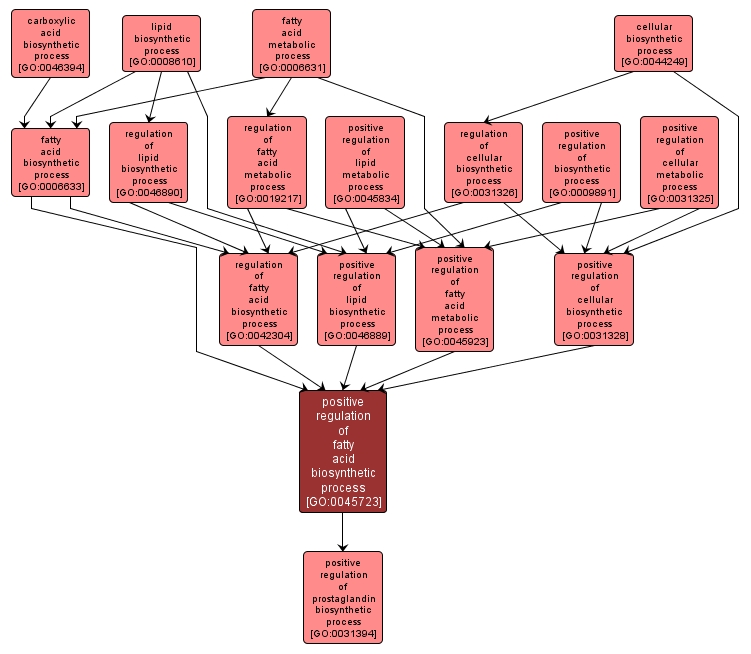GO TERM SUMMARY
|
| Name: |
positive regulation of fatty acid biosynthetic process |
| Acc: |
GO:0045723 |
| Aspect: |
Biological Process |
| Desc: |
Any process that activates or increases the frequency, rate or extent of the chemical reactions and pathways resulting in the formation of fatty acids. |
Synonyms:
- activation of fatty acid biosynthetic process
- stimulation of fatty acid biosynthetic process
- positive regulation of fatty acid anabolism
- positive regulation of fatty acid formation
- up-regulation of fatty acid biosynthetic process
- up regulation of fatty acid biosynthetic process
- positive regulation of fatty acid biosynthesis
- positive regulation of fatty acid synthesis
- upregulation of fatty acid biosynthetic process
|














